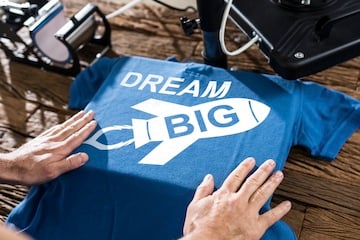How Lifecycle Marketing Powers Ecom SMBs

For small and midsized ecommerce businesses, implementing a strategic approach to engaging shoppers through lifecycle marketing can prove to be beneficial.
Below is a comprehensive framework for shopper lifecycle marketing tailored for an online store specializing in niche print-on-demand t-shirts. Each stage includes the framework and detailed implementation strategies.
- Attraction
- Purchase
- Fulfillment
- Retention
- Reorder
Attraction
The “attraction” phase focuses on introducing the store, products, or unique value proposition to potential shoppers in a crowded digital marketplace.
Various channels and features can be utilized to achieve this goal, such as:
- Content marketing. Utilizing shoppable videos, engaging blog posts with SEO and structured data markup for rich snippets.
- Advertising. Running programmatic ads with AI-driven targeting on platforms like Google Ads, Meta Ads, etc.
- Social media. Leveraging emerging platforms, influencer partnerships, and social commerce features on platforms like TikTok, Instagram, etc.
- Marketplace. Establishing a presence on platforms like Amazon and Etsy and utilizing social commerce features.
The t-shirt shop implemented various strategies including keyword research, content automation, platform changes, and influencer collaborations to attract shoppers. Performance indicators like email subscriptions, site traffic, and ad engagement are monitored.
An example of one of the ads the t-shirt shop uses to attract shoppers. Click image to enlarge.
Purchase
The “purchase” stage focuses on converting potential shoppers into customers by providing a seamless and secure purchasing experience.
Effective tactics at this stage include optimizing the online store, marketplace utilization, email marketing, and SMS communication.
The t-shirt shop relies on Shopify for offering various payment options, email/SMS communication, and follows an “opt-out” approach for email marketing.
Fulfillment
Ensuring timely order fulfillment and a positive purchase experience is crucial in the “fulfillment” stage. Communication plays a key role in this phase.
The t-shirt shop faced challenges due to its print-on-demand model and implemented strategies like setting delivery expectations and using AI chatbots.
The t-shirt shop lets customers know it might take 10 days to fulfill the order. Click image to enlarge.
Retention
The “retention” phase focuses on engaging customers post-purchase to encourage repeat orders and referrals. Strategies include email/SMS marketing, referral programs, review requests, and social media engagement.
The t-shirt shop is launching a loyalty program and a weekly email newsletter to retain customers.
Reorder
Encouraging repeat purchases involves recognizing loyal customers and offering personalized incentives. Retargeting ads, email promotions, and SMS deals are effective tactics at this stage.
The t-shirt shop utilizes newsletters, ad retargeting, and email promotions to encourage second sales and recognizes customer loyalty through email sequences.
Lifecycle Advantage
An ecommerce lifecycle marketing framework serves as a roadmap for shopper engagement, driving both initial and repeat sales.
FAQs
1. How can small and midsized ecommerce businesses benefit from lifecycle marketing?
Lifecycle marketing helps in engaging shoppers strategically, leading to increased conversions and customer retention.
2. What are some key strategies for attracting shoppers in a crowded digital marketplace?
Utilizing content marketing, advertising, social media, and marketplace presence are effective strategies for attracting shoppers.
3. How can ecommerce businesses ensure a seamless purchasing experience for customers?
Optimizing the online store, utilizing marketplace platforms, and effective email/SMS communication contribute to a seamless purchasing experience.
4. What challenges might ecommerce businesses face in the fulfillment stage?
Challenges in the fulfillment stage may include timely order processing, communication issues, and managing customer expectations.
5. How can ecommerce businesses encourage repeat purchases from customers?
By implementing retargeting ads, personalized email marketing, loyalty programs, and offering incentives, businesses can encourage repeat purchases from customers.

